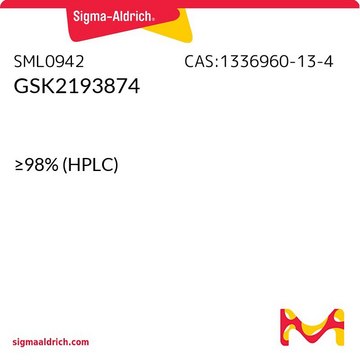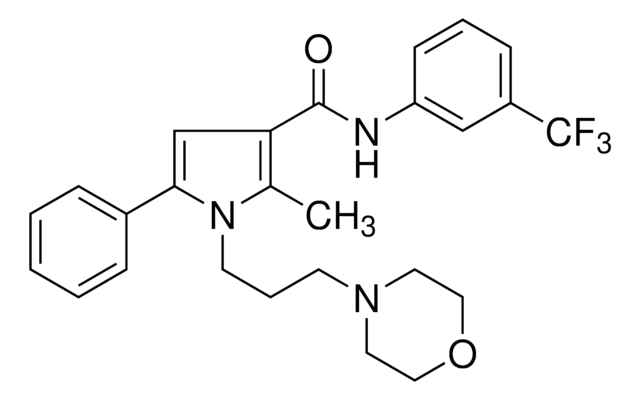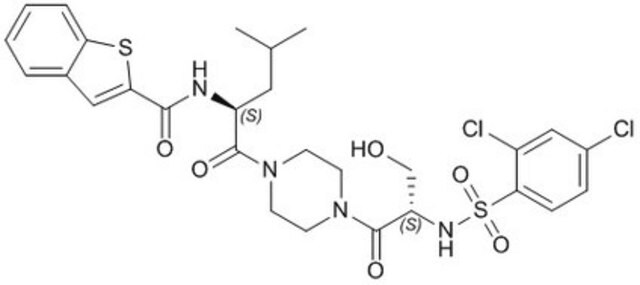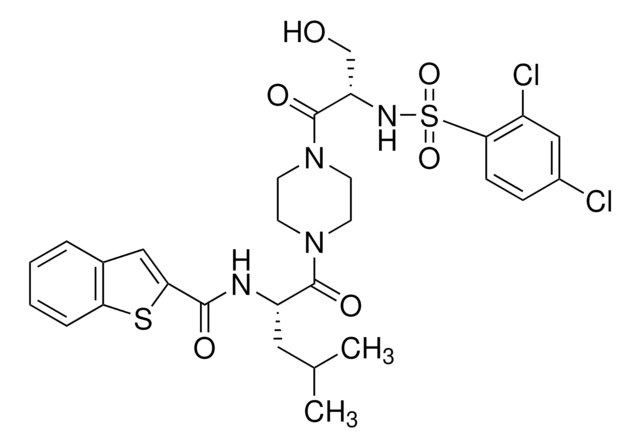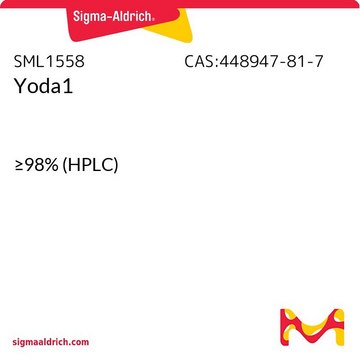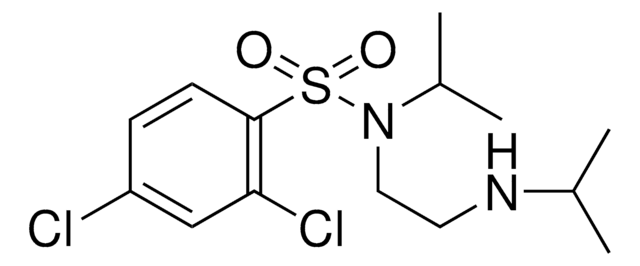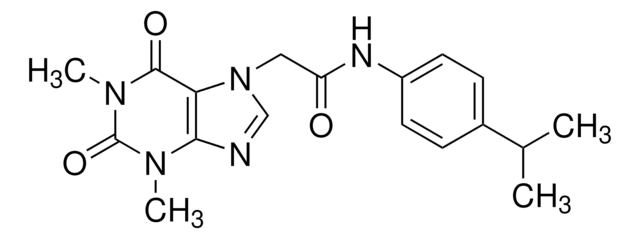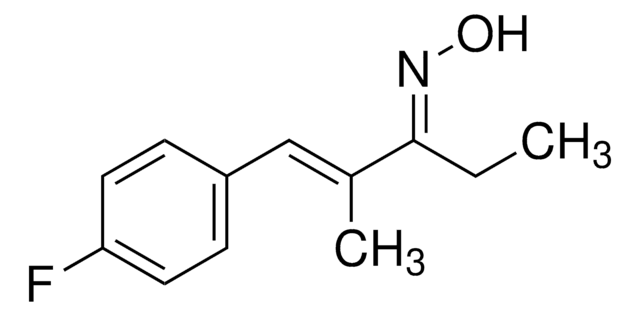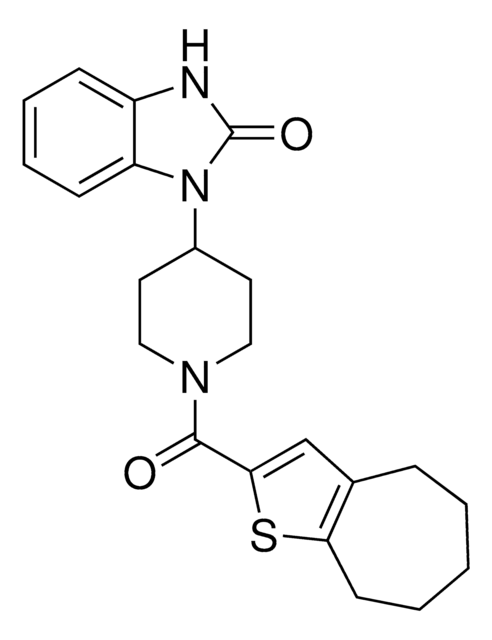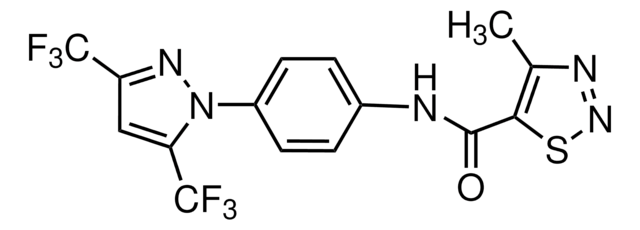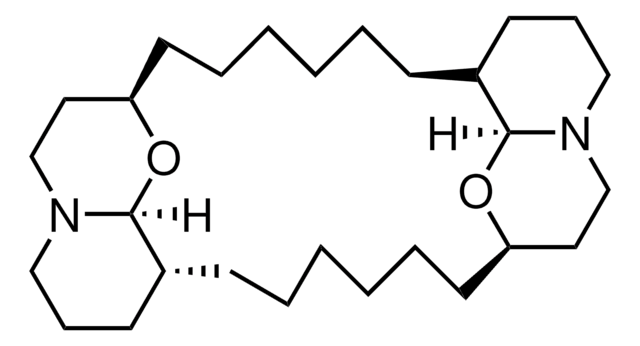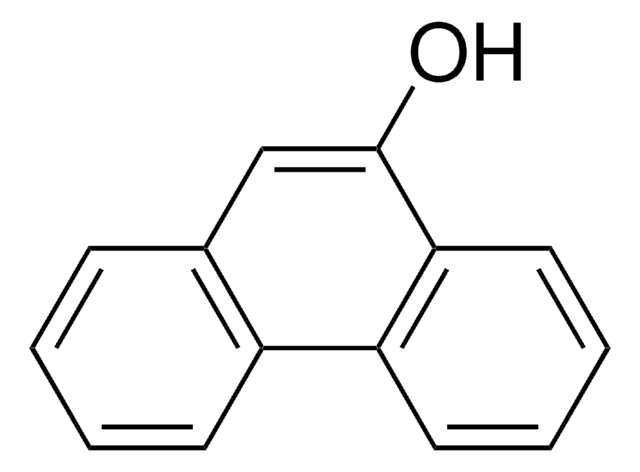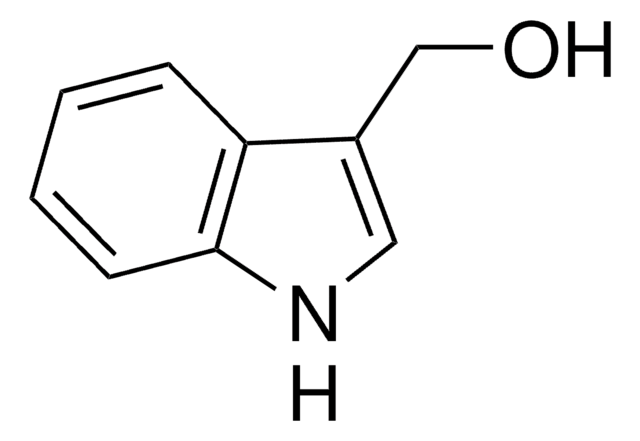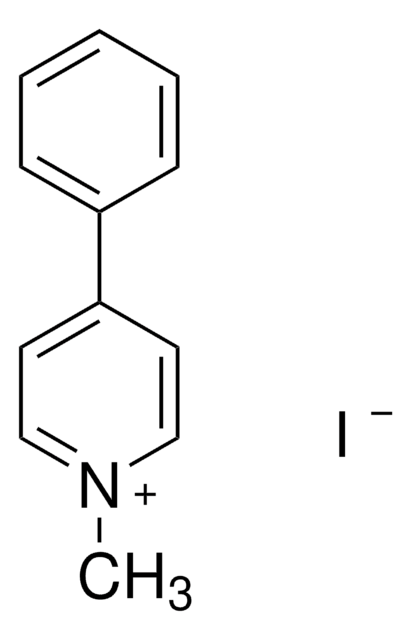SML0143
HC-067047
≥98% (HPLC)
Synonym(e):
2-Methyl-1-[3-(4-morpholinyl)propyl]-5-phenyl-N-[3-(trifluoromethyl)phenyl]-1H-pyrrole-3-carboxamide
About This Item
Empfohlene Produkte
Qualitätsniveau
Assay
≥98% (HPLC)
Form
powder
Lagerbedingungen
desiccated
Farbe
white to tan
Löslichkeit
DMSO: ≥15 mg/mL
Lagertemp.
2-8°C
SMILES String
CC1=C(C(NC2=CC(C(F)(F)F)=CC=C2)=O)C=C(C3=CC=CC=C3)N1CCCN4CCOCC4
InChI
1S/C26H28F3N3O2/c1-19-23(25(33)30-22-10-5-9-21(17-22)26(27,28)29)18-24(20-7-3-2-4-8-20)32(19)12-6-11-31-13-15-34-16-14-31/h2-5,7-10,17-18H,6,11-16H2,1H3,(H,30,33)
InChIKey
NCZYSQOTAYFTNM-UHFFFAOYSA-N
Anwendung
- to study its effects on organoid formation and proliferation in human endometrial tissues
- to determine its effects on neuronal survival after intracerebral hemorrhage (ICH)
- to study its effects on TRPV4 regulation of angiotensin II receptor type 1 (AT1R) task, phosphorylation and β-arrestin recruitment in choroid plexus
Biochem./physiol. Wirkung
Lagerklassenschlüssel
11 - Combustible Solids
WGK
WGK 3
Flammpunkt (°F)
Not applicable
Flammpunkt (°C)
Not applicable
Analysenzertifikate (COA)
Suchen Sie nach Analysenzertifikate (COA), indem Sie die Lot-/Chargennummer des Produkts eingeben. Lot- und Chargennummern sind auf dem Produktetikett hinter den Wörtern ‘Lot’ oder ‘Batch’ (Lot oder Charge) zu finden.
Besitzen Sie dieses Produkt bereits?
In der Dokumentenbibliothek finden Sie die Dokumentation zu den Produkten, die Sie kürzlich erworben haben.
Kunden haben sich ebenfalls angesehen
Unser Team von Wissenschaftlern verfügt über Erfahrung in allen Forschungsbereichen einschließlich Life Science, Materialwissenschaften, chemischer Synthese, Chromatographie, Analytik und vielen mehr..
Setzen Sie sich mit dem technischen Dienst in Verbindung.